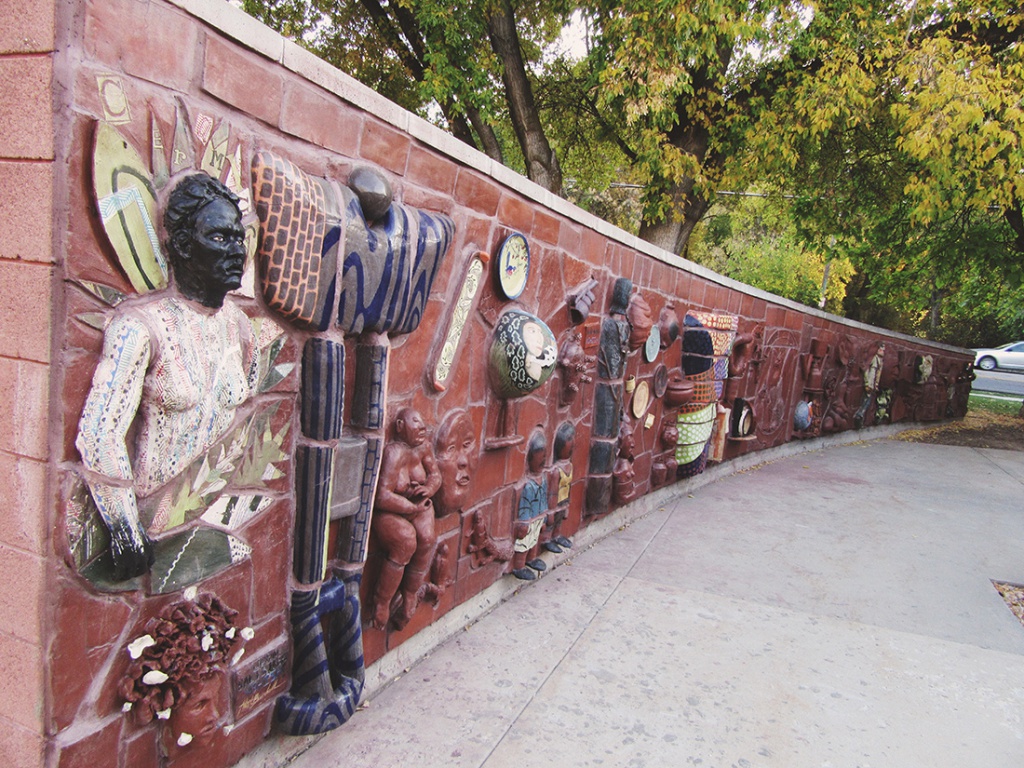
Opening Shot
Journey through Clay
by Jessika Huhnke (’16)
The wall outside of the Dolores Doré Eccles Ceramic Center has been enhanced by a high-relief sculptural mural by Westminster ceramics students. The installations took place over the course of two May Term classes and during many hours volunteered by art students in the summers of 2015 and 2016. Clayton Keyes, head of the ceramics program and chair of the Art Department, used the installation as a way to inspire art students and heighten the profile of the ceramics program.
Clayton used the project as an avenue to expose his students to artists they were not familiar with during his Narrative Wall Mural May Term classes. The wall visually represents over a century of evolution in contemporary clay. Students selected artists from the 19th and 20th centuries whom they wanted to depict and produced an aesthetic that was symbolic of that artist’s work to emulate on the wall. The wall represents artists such as Beatrice Wood—also known as Mama of Dada—who was part of the Dadaist movement and known for her lustre-fired vessels. Peter Voulkos—known for his role in the Abstract Expressionism movement for pushing functional ceramics out of the realm of utilitarianism and into the world of art—is portrayed, and Richard Notkin—whose work represents the atrocities of war and the immense capacity of humans to inflict violence and cruelty—is also represented.
“There were people who were instrumental in my career—some I worked with—whom I was able to pay tribute to through my students selecting them to put on the wall,” says Clayton. “I employ everything I learned from those artists in teaching my students.”
As he looks to the future of the wall, Clayton directs his focus to a project he is overseeing in his sculpture class: the Colossal Head Project. He asked his students to think about their cultural heritage, their identity, and the life that they experienced prior to Westminster and to translate those concepts into a head. At the conclusion of this project, six heads—which represent the joining of cultures and acceptance of individual identities—will be installed on the grounds of the ceramics studio.
“On campus these days, we are talking very much about being inclusive, gender pronouns, how people feel they are naturally, what they feel they are, and just being accepting of that,” says Clayton. “I thought it seemed very timely.”
About the Westminster Review
The Westminster Review is Westminster University’s bi-annual alumni magazine that is distributed to alumni and community members. Each issue aims to keep alumni updated on campus current events and highlights the accomplishments of current students, professors, and Westminster alum.
GET THE REVIEW IN PRINT STAY IN TOUCH SUBMIT YOUR STORY IDEA READ MORE WESTMINSTER STORIES
